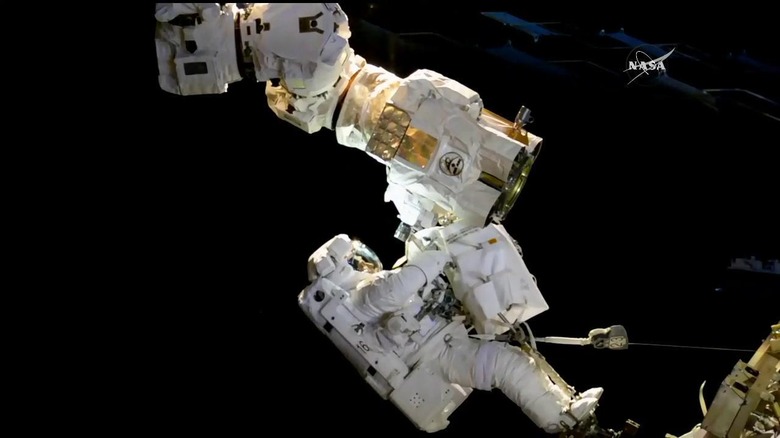NASA Still Hasn't Decided On A Spacesuit For Future Missions, And It's Getting Kind Of Silly
NASA stands at the very edge of an incredibly exciting time in space exploration. Mankind has discovered incredibly interesting things on Mars as well as other bodies within our Solar System, and new spacecraft are in development that will allow humans to travel faster and farther than ever before. With all this happening you might be thinking that astronaut wardrobe is the least of NASA's concerns, but you couldn't be more wrong.
A new spacesuit for astronauts to wear during long-haul missions and potential surface visits to the Moon and even Mars is missing in action. The suits that NASA astronauts wear during spacewalks at the International Space Station are total relics, and the last suits that were worn on the surface of something other than Earth (so, the Moon) now collect dust in museums. This is a problem.
As the Daily Beast reports, the situation is more dire than anyone might realize. The current extravehicular activity (EVA) suits that astronauts wear outside of the ISS are massive and bulky, and very little about their design has changed since the 1970s. Not only that, of the 18 EVA suits which were originally built, only 11 of them actually still work, and they're built in only three sizes, making for awkward fits for some astronauts.
NASA has outsourced the design of new spacesuits to various contractors, and those projects resulted in prototypes that would seem to be a huge step forward. However, none of those projects actually resulted in fully functioning hardware, according to a recent government audit. Those projects set NASA back $200 million, with nothing to show for it but some prototypes of what a new spacesuit might look like.
With rapidly-approaching plans for a lunar jump-off point for deep space missions and trips to places like Mars, knowing what the crew will actually be wearing during those trips is of vital importance. It's abundantly clear that the decisions on a new space suit are behind schedule — which is becoming a trend in this new space race — and astronauts who will be taking those missions would surely like to know what they'll be wearing.
